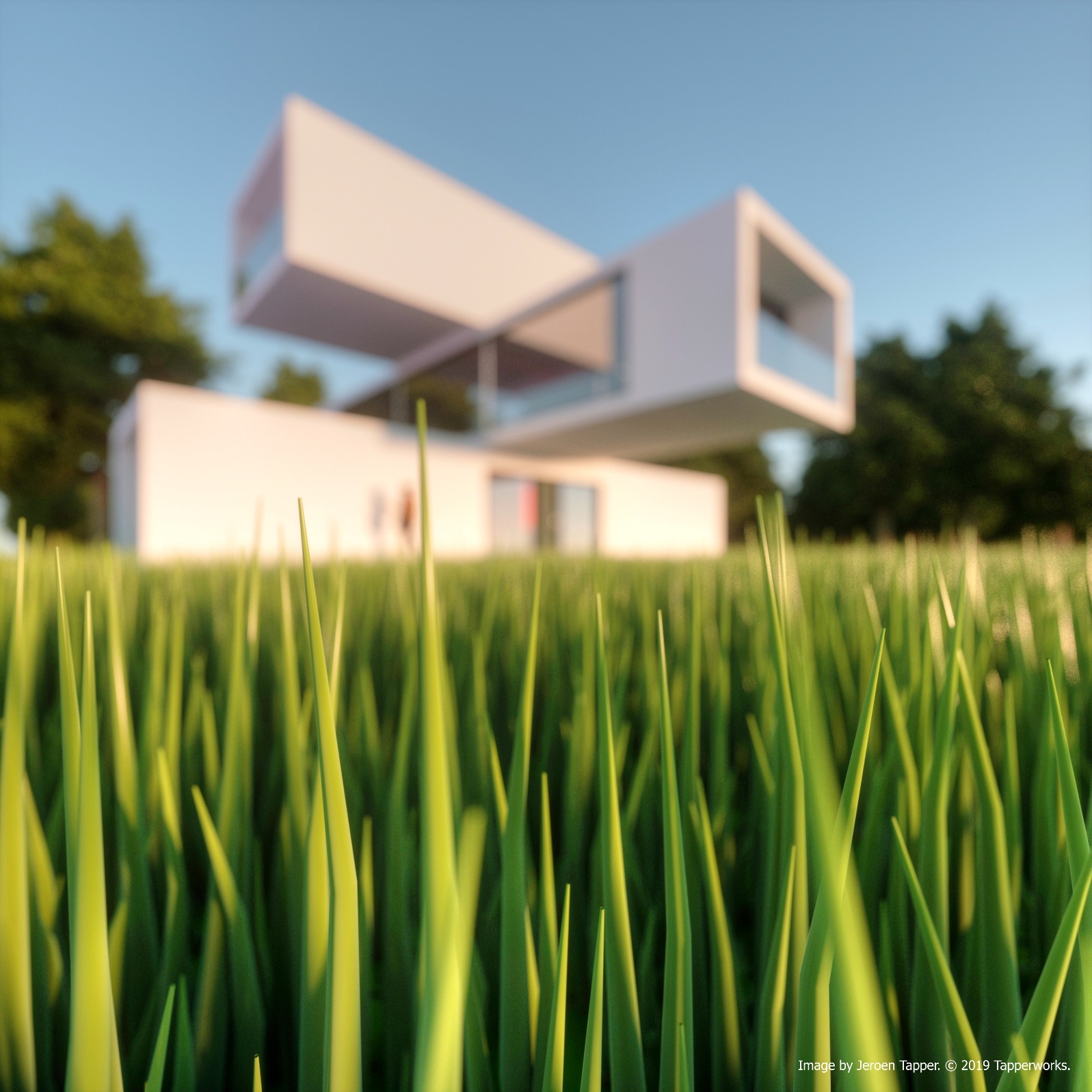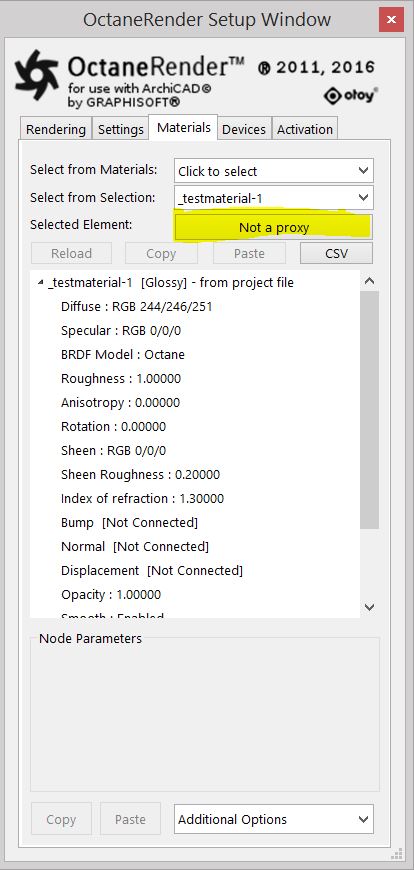
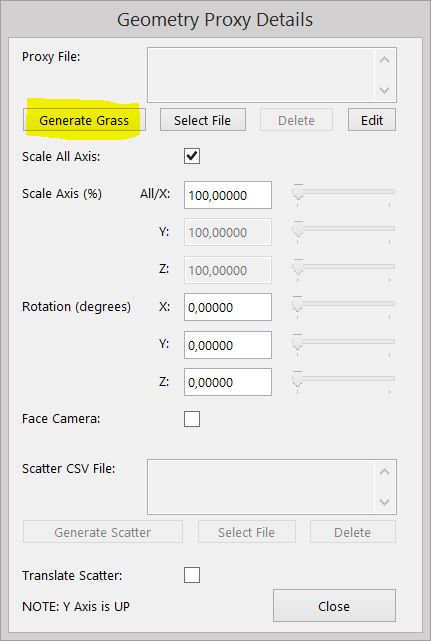
The W Coordinate texture can access the OctaneRender® W Coordinate System, which provides the means to place Gradients on ‘hair’ geometry.
In the OctaneRender for ArchiCAD Plugin the W Coordinate texture is usable in the MaterialThe representation of the surface or volume properties of an object. settings for the Generated Grass (by using Geometry ProxyAn object saved as a separate file with the purpose of being reused in larger scenes. This is used to minimize any addition to the total polygon count in the scene, especially if the scene requires the same object to appear several times. If used in conjunction with instancing, Proxies help keep very large scenes from reaching polygon limits and also keeps the relative file size of the main project file manageable.), because the alembic grass file has W coords and therefore its behaviour is compared to ‘hair’ strands.
You can use the Grass Generator for more than just grass, such as creating your own carpet using the grass (in fact ‘hair’ strands’) for the fabric.


In Chapter Octane Proxy you can find more information about how to Generate Grass.
The W Coordinate texture can access the OctaneRender® W Coordinate System, which provides the means to place Gradients on hair geometry. The hair geometry stores an inherent Gradient Interpolation along with hair data exported to the *.abc (generated with the Generate Grass tool). W is an attribute of the Mesh node, which defines a coordinate for every hair vertex per strand. This attribute is loaded from an AlembicAn open format used to bake animated scenes for easy transfer between digital content creation tools. file input.
To use the W attribute to apply gradient colors to the hair (grass) data, you must plug a W Coordinate texture as the Input of an OctaneRender Gradient. This tells OctaneRender to render the inputs as a Gradient mapping, and OctaneRender uses the specified Gradient interpolation to distribute the gradient. Select the ArchiCAD Object (used for the Proxy) and in the MaterialsA set of attributes or parameters that describe surface characteristics. Tab the grass material is active.
Below you can see the edited settings and the result image.
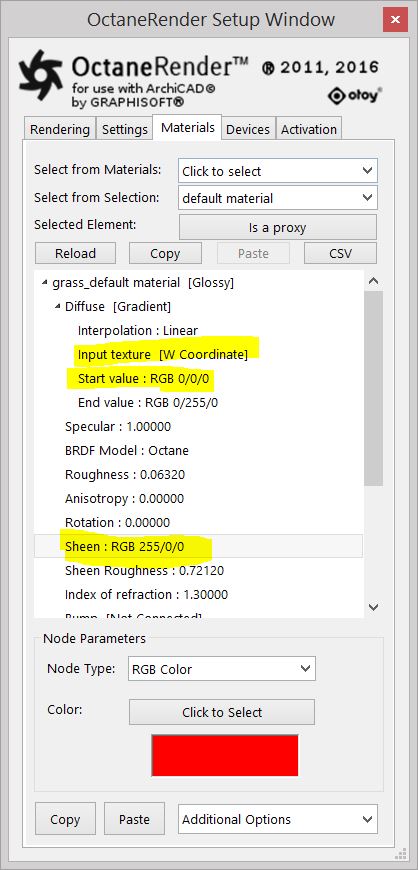 ← Settings for ‘grass_default_material (GlossyThe measure of how well light is reflected from a surface in the specular direction, the amount and way in which the light is spread around the specular direction, and the change in specular reflection as the specular angle changes. Used for shiny materials such as plastics or metals.)’
← Settings for ‘grass_default_material (GlossyThe measure of how well light is reflected from a surface in the specular direction, the amount and way in which the light is spread around the specular direction, and the change in specular reflection as the specular angle changes. Used for shiny materials such as plastics or metals.)’
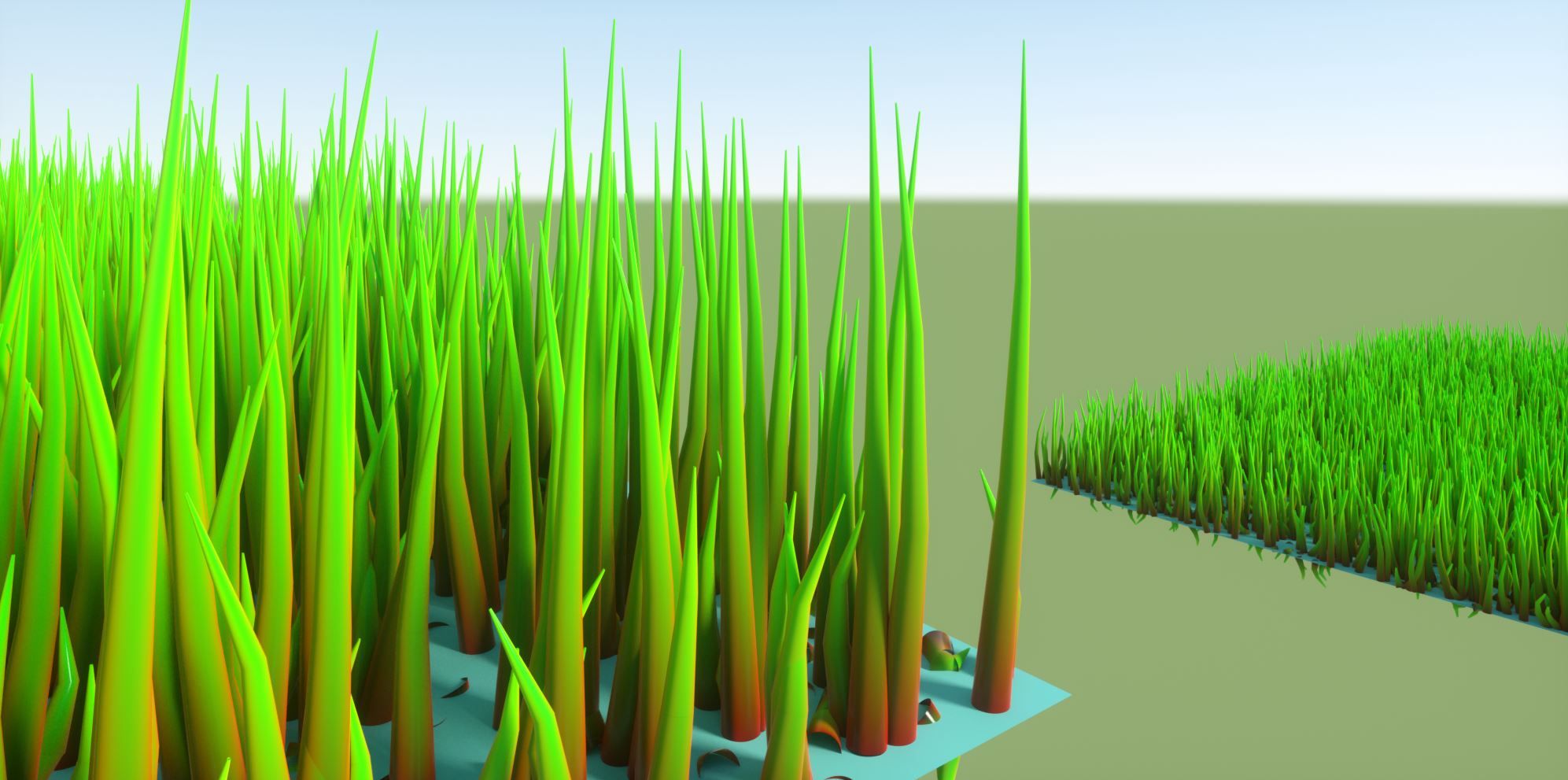
The End Value (top of grass) is set to Green and the Start Value (bottom of grass) is set to black. Notice the effect of the red color used for the Sheen.
Below you can see the settings and the result image with other values.
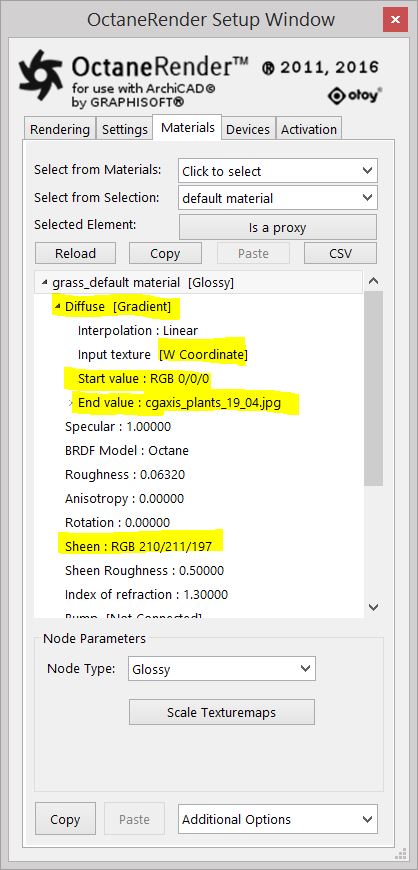 ← Settings for ‘grass_default_material (Glossy)’
← Settings for ‘grass_default_material (Glossy)’
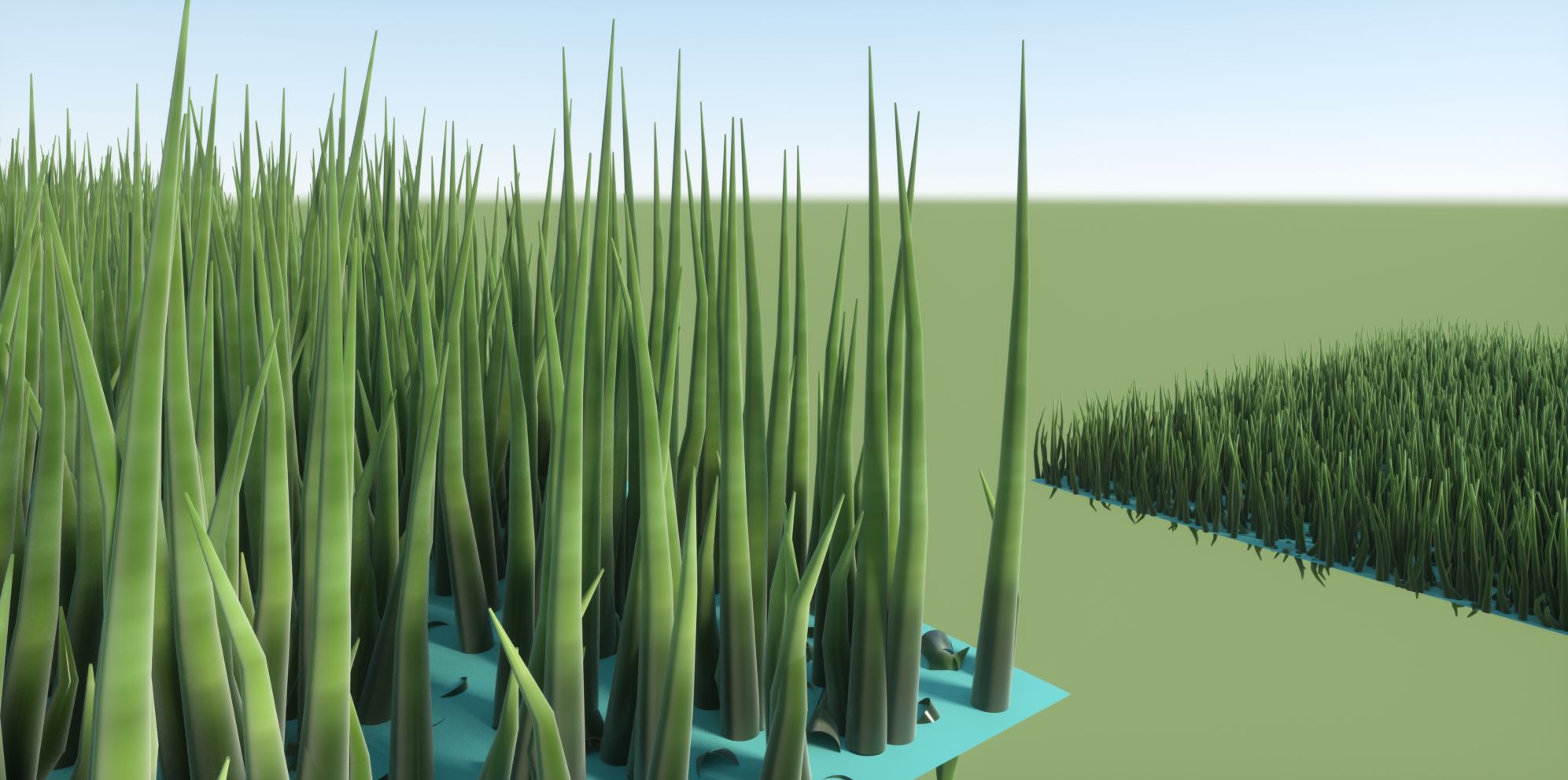
Now an image is used for the End Value (top of grass) and the Sheen and Sheen Roughness are set differently.
Note: Theoretically you could import abc files generated with other 3D modelling applications.
If you want to know more (i.e. about multiple segments) you can find more information about W Coordinate in the Manual for OctaneRender Standalone.
